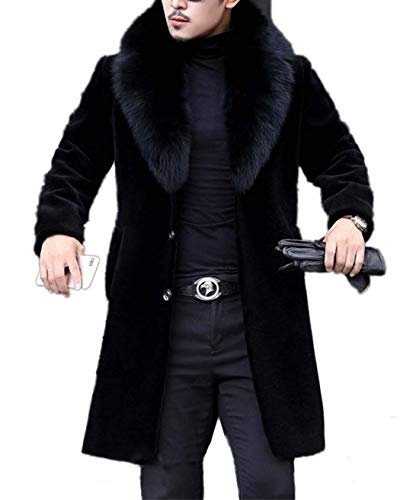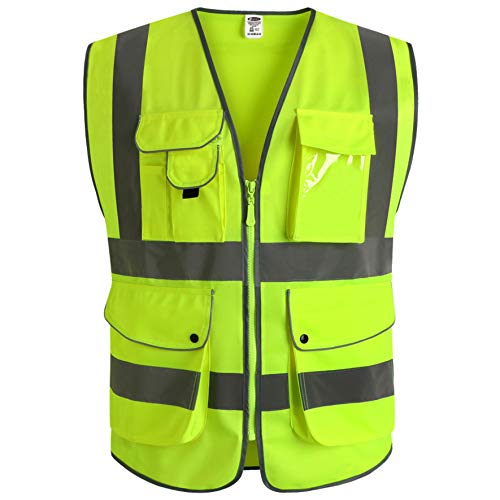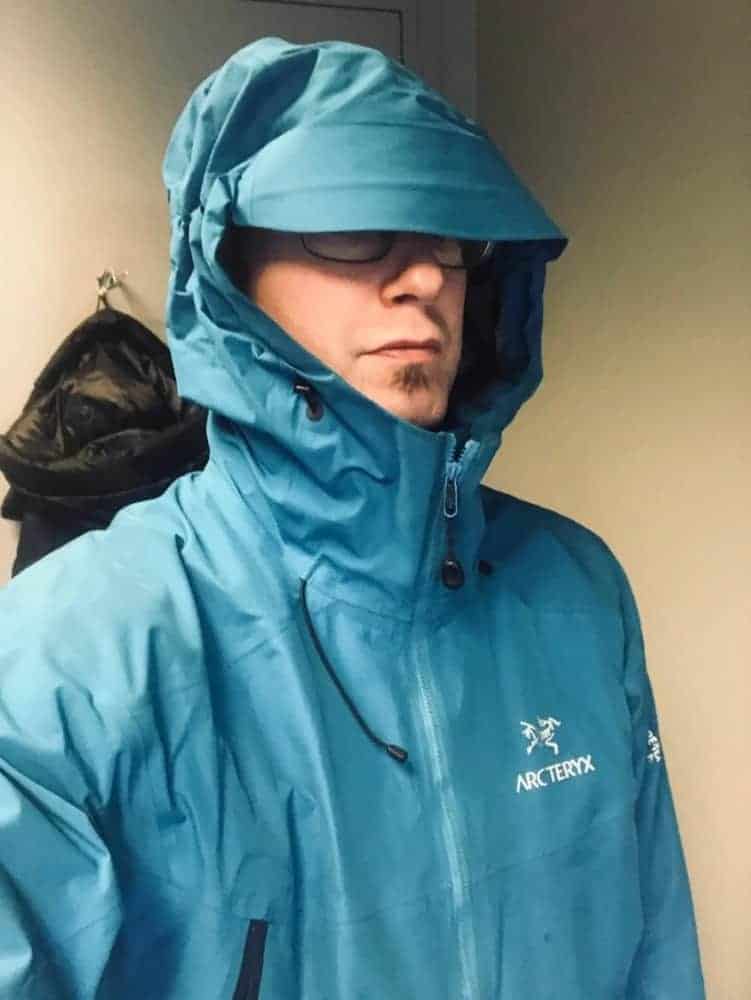Need a jacket. We have you covered literally. Check out this epic list of all the different types of jackets for women and men.
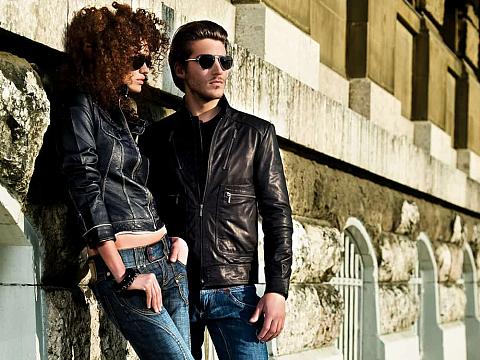
Jackets are a wardrobe essential, as they not only upgrade your overall style but also keep you warm in the chilly days of autumn and winter. There was a time when jackets used to only come in limited colors like brown, black and white and in common fabrics, such as leather and wool.
Thankfully, due to the progress made in the fashion industry, there has been a staggering increase in designs and styles of clothing, including everyone’s favorite: jackets!
Jackets come in several styles for women and men. In fact, the number of types of jackets available to you can be a bit overwhelming. Which styles do you have, which styles do you love and which styles would you never wear?
Table of Contents
- Best Jacket & Coat Store Online
- Genderless Jackets
- 1. Anorak
- 2. Parka
- 3. Bed Jacket
- 4. Bolero
- 5. Cape Jackets
- 6. Gilet
- 7. Poncho
- 8. Puffer Coat
- 9. Track Jacket
- Types of Jackets for Women
- 1. Blazer
- 2. Cropped Jacket
- 3. Fur Coat
- 4. Maxi Coat
- 5. Peplum Jacket
- 6. Swing Coat
- 7. Wrap Coat
- 8. Spencer Jacket
- Types of Jackets for Men
- Men’s Coats Chart
- 1. Bomber Jacket
- 2. Car Coat
- 3. Chesterfield
- 4. Chore Coat
- 5. Cloak
- 6. Covert
- 7. Crombie Coat
- 8. Dinner Jacket
- 9. Donkey Jacket
- 10. Duffle Coat
- 11. Duster Jacket
- 12. Eisenhower Jacket
- 13. Field Jacket
- 14. Flak Jacket
- 15. Fur Coat
- 16. Guards Coat
- 17. Hacking Jacket
- 18. Harrington Jacket
- 19. High-Visibility Vest
- 20. Loden
- 21. Mackintosh
- 22. Military Jacket
- 23. Morning Coat
- 24. Motorcycle Jacket
- 25. Nehru Jacket
- 26. Norfolk Jacket
- 27. Paletot
- 28. Peacoat
- 29. Slicker
- 30. Sports Coat
- 31. Smoking Jacket
- 32. Suit Jacket
- 33. Tailcoat
- 34. Trench Coat
- 35. Trucker Jacket
- 36. Tuxedo
- 37. Ulster
- 38. Varsity Jacket
- 39. Windbreaker
- 40. Warmus Jacket
- 41. Zip-Up Hoodies
- 42. Coatee
- 43. Mess Jacket
- Specialty Jackets
- Historic Jackets
- Jacket Materials
-
FAQs
- Jacket vs. coat – what’s the difference?
- Which jacket is best for winter?
- How should a jacket fit?
- Can leather jackets get wet?
- Can jackets be tailored?
- Can jackets be washed in the washing machine?
- Can jackets shrink?
- Which jackets are in style?
- Which jackets or coats should be worn with dresses?
- How many jackets should you own?
- Can men wear women’s jackets?
- How do you tell the difference between men’s and women’s jackets?
- Which side is the zipper on in men’s jackets and why are zippers different for women?
- Is a cardigan a jacket?
- Can you wear a jean jacket over the age of 50? How can you pull it off?
- How much should you spend on a coat?
- How do you choose the right coat for your body?
Chart: Top 10 Types of Jacket
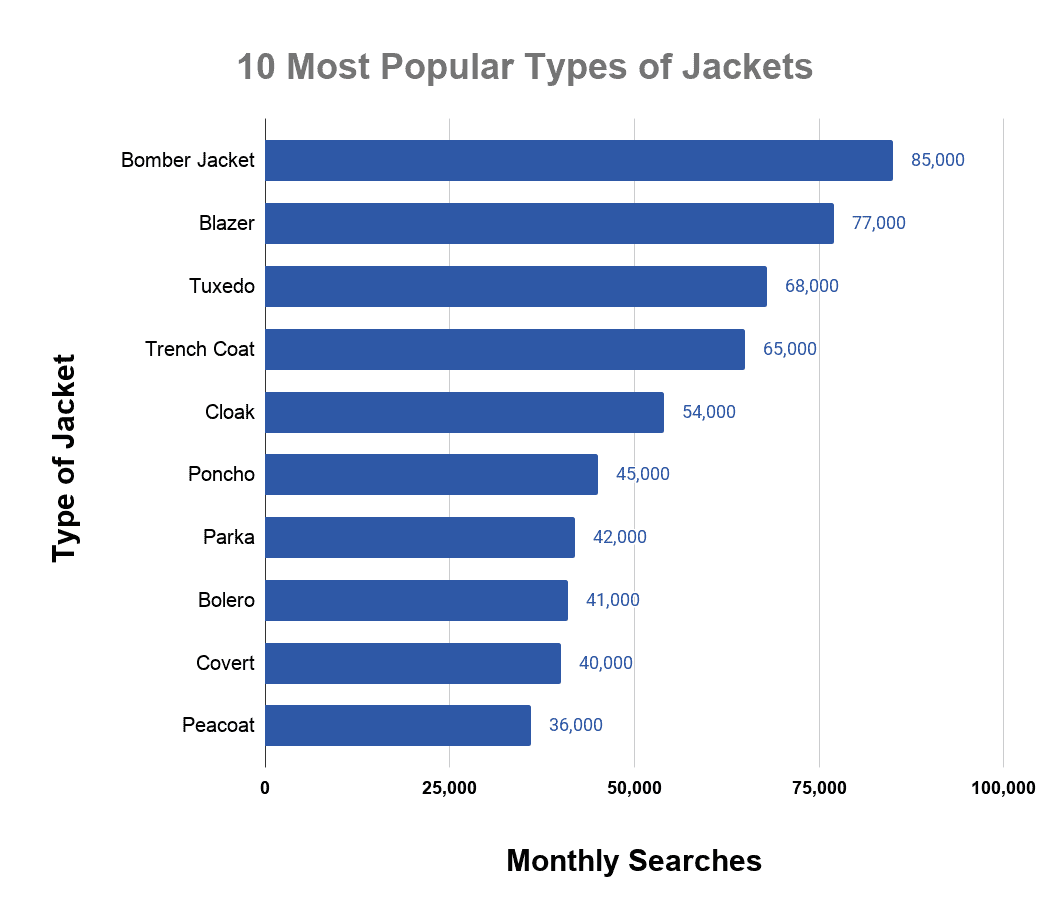
All Types of Jackets:
Best Jacket & Coat Store Online
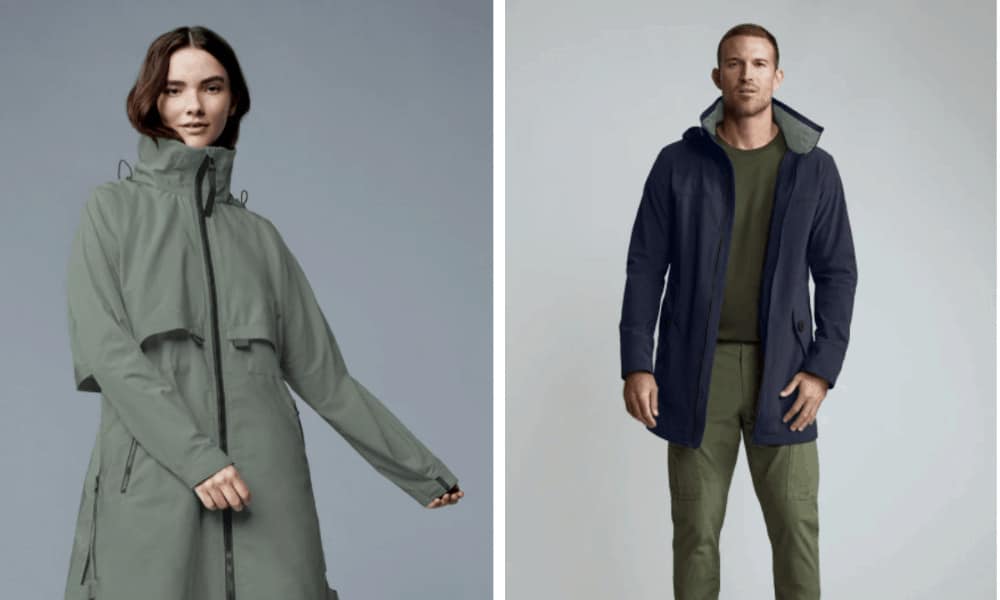
I own a bomber puffy coat from this online store and it’s the greatest coat I’ve ever owned. I’m not sure I’ll buy coats from another store ever. The quality is second-to-none. The fit… amazing. I love it.
Genderless Jackets
The very first jackets ever created weren’t made with gender in mind. Many different types of jackets were actually designed for either men or women to wear. These genderless jackets were always made for everyone and anyone to enjoy.
1. Anorak
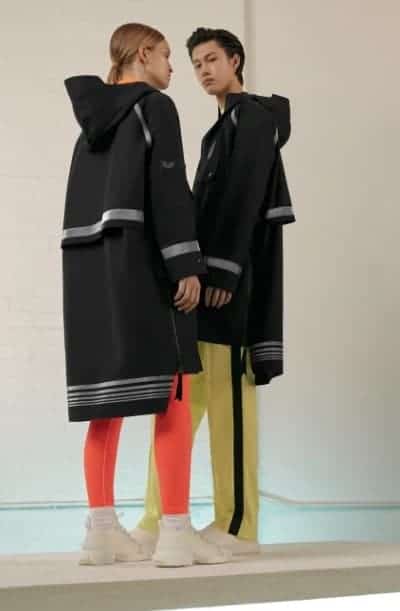
An anorak is a warm, hooded coat. It’s usually short in length, not falling too far past the waist. Anorak jackets are waterproof.
2. Parka

The anorak inspired the modern parka design. Today, parkas are typically just called parkas but they may also be called anoraks. Early parkas were worn by early 20th century explorers and soldiers.
The parka was traditionally made from caribou or seal skin. However, it is now made from synthetic materials. It is still used to keep warm in the frigid arctic and can sometimes be coated with fresh fish oil to keep its texture.
A parka jacket is the current obsession of celebs and non-celebs alike. This trendy jacket is supremely versatile to wear, as it can be rocked in several fun ways.
Throw on a black sleeveless shift dress and team it up with a brown hooded parka for a relaxed weekend look. You can also look for parka jackets in soft pastel colors to underline your femininity.
If you are a huge fan of denim, then a denim parka jacket could be your go-to choice. Do pair your denim parka jacket with a neutral outfit so that it remains in the spotlight.
History
Anoraks were traditionally worn by native Eskimos and Inuit peoples. The word comes from “anoraq,” an Eskimo word. In traditional designs, they’re made with animal hide and sometimes lined with fur for warmth.
3. Bed Jacket
If you live in a colder climate, a bed jacket is a must-have. These jackets are lightweight but warm. They’re designed to be worn over pajamas and night clothes and made to be comfortable while you’re sitting in bed or lounging on the couch. Bed jackets usually look like short robes and they’re often made with very similar material, such as flannel, silk and terrycloth, according to WiseGeek.
4. Bolero
In fashion, a bolero is a short, stylish jacket that’s worn more as an accessory to an outfit rather than for warmth. Bolero is also a style of music. But though both the jacket and the music originated in Spain, the two are not linked.
Style
The bolero is an open-fronted jacket, usually collarless. It has long sleeves and stops above the waist in a cropped, stylized design. The bolero is a direct inspiration of the zouave, a similar jacket that was military in design, according to the Business of Fashion.
The zouave is slightly longer and looser than the bolero. It was worn by the 5th New York Volunteer Infantry during the Civil War, as well as many other regiments. The French Army wore zouave jackets and matching pants for their uniforms, which inspired the look in the U.S. The French modeled their uniform after Algerian fighters they encountered in the 1830s, according to the National Museum of American History.
The shrug is a variation of the bolero that’s a little less stylized. Shrugs can have long sleeves, short sleeves or three-quarter sleeves and may be made in a huge variety of materialism, colors and patterns.
5. Cape Jackets
Capes are such an accepted fashion accessory these days, you may not even think about the fact that actually, a cape is a type of jacket. In fact, it’s one of the oldest types of jackets. Capes date to at least 1066. In an illustration that dates to this year, a soldier is depicted clearly wearing a cape. For around one thousand years, this jacket has been worn by everyone from great monarchs to Superman to the Phantom of the Opera, WWII nurses, and fashionable folks of all types.
History
Capes became a staple of medieval fashion when they were used as a symbol of status. Royals wore long capes trimmed in fur as a sign of wealth and rank. Monks wore short, hooded capes. During the Victorian era, capes that were bright red were a sign of social standing and breeding. Capes also became part of military uniforms, used in Europe as rain protection up to the early 1900s, according to CR Fashion Book.
Modern Style
In the 1920s, cape jackets became trendy in women’s fashion. Fashion capes were worn with evening wear. The look became even more stylized in the 1930s as cape jackets took on more tailored shapes and now included slits for the arms. They were tweaked again in the 1950s when they were a ubiquitous evening dress companion for the well-heeled women of the day, becoming shorter and now closing in the front.
Cape jackets aren’t seen so much these days, though they have made a couple of brief reappearances on the fashion scene since. Perhaps it’s time that cape jackets make another comeback.
6. Gilet

The gilet, now more commonly known as the body warmer, is a vest that’s made as outerwear. This is a stylish way to keep warm that actually has roots in the 1400s fashion scene, according to the Independent.
History
The gilet was inspired by the jerkin, a Middle Ages garment that was widely worn by Europeans throughout the 1400s. This was a sleeveless jacket, usually made from leather. The sleeveless design made the gilet easy to move in but still provided warmth around the body’s core.
Modern Style
The gilet was somewhat more fitted than the stiff jerkins of the past. In the 1900s, gilets became quilted and they became an often-seen choice in mainstream fashion. The modern design of the gilet hasn’t changed much. Recently, it’s been re-branded as the body warmer and has become trendy in pop fashion again. Often, the body warmer has a jacket collar to finish the look.
7. Poncho
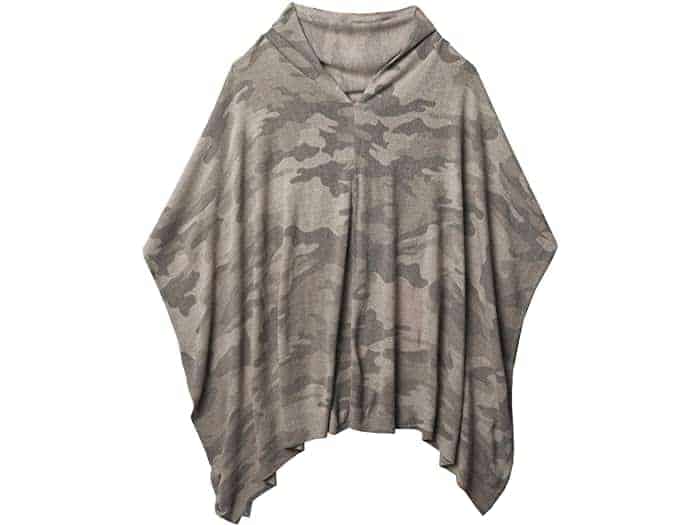
The poncho is a very old garment that has ancient roots. The word itself dates to the early 1700s. The poncho is a blanket-like garment with a hole in the center for the head to fit through. The poncho covers the shoulders, chest, and upper back. Traditionally, ponchos are made with woolen fabric.
8. Puffer Coat
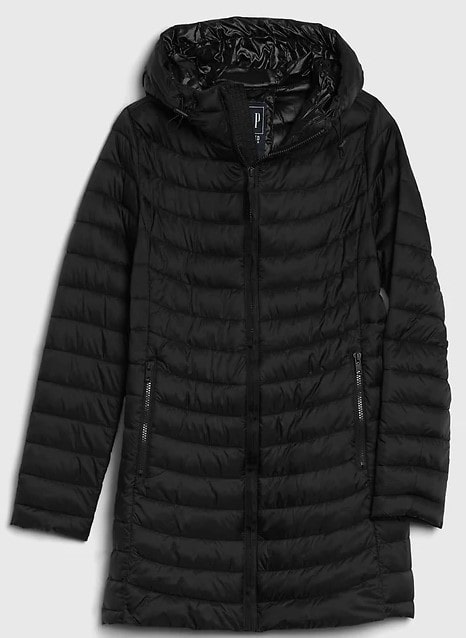
Puffer coats are down coats that have a distinct, puffy style that is achieved through horizontal stitching that creates pockets of insulation. These jackets can look really puffy or not so much. Puffer coats are extremely trendy and come in a variety of classic jacket styles, including the sleeveless gilet design. A puffer coat, also known as a puffer jacket or a puffy jacket, is a great winter jacket. This may also be called a quilted jacket, though many other types of jackets may also be quilted.
9. Track Jacket
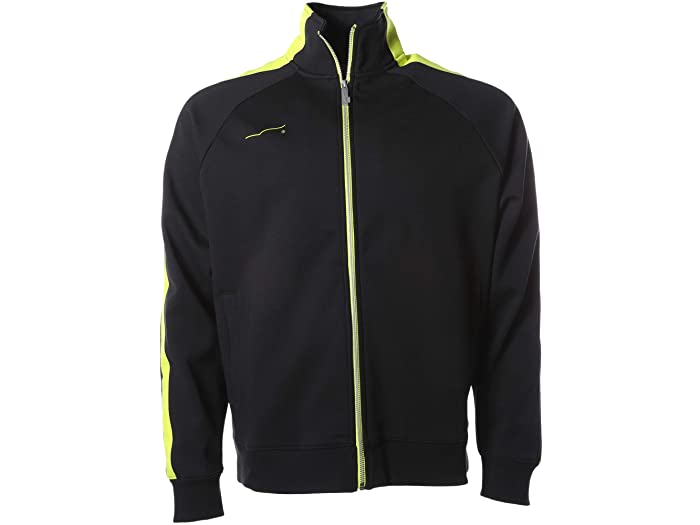
The track jacket was born as part of the tracksuit in the 1960s. It was a breakthrough in athletic wear created by the availability of nylon fabrics. In the 1970s, the tracksuit and the track jacket made the jump into everyday, mainstream fashion, according to Complex.
Track jackets are typically fairly lightweight jackets made with short collars and zip-up fronts. Often, the cuffs and waist are finished with ribbed fabric.
Types of Jackets for Women
Women’s fashion has gone through some pretty extreme changes through the centuries. As dress silhouettes and styles of clothing have evolved, jackets that match the shape of the clothes women wear have been a necessity. Fashion is full of unique types of jackets, some of which have withstood the test of time and others that are just as irrelevant today as the hoop skirt!
1. Blazer
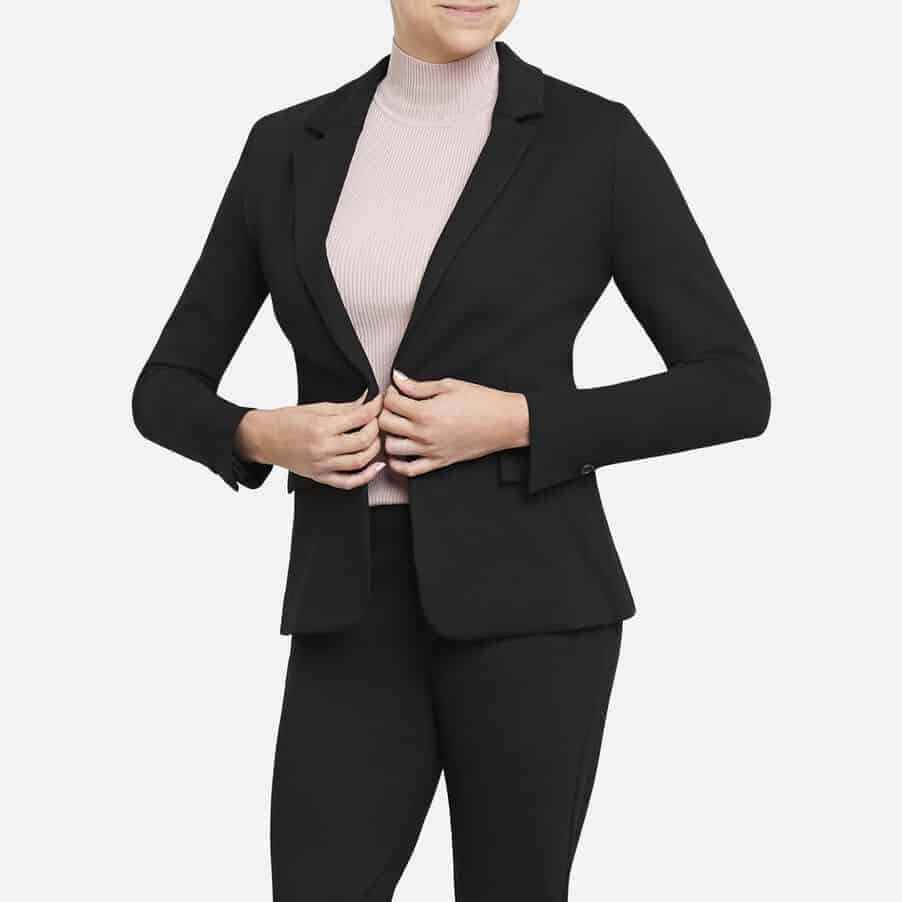
The blazer has become a ubiquitous part of men’s fashion. So many men own at least one blazer they can slip on to look a little more professional or a little more fixed up whenever it’s needed.
Style
Traditionally, blazers are made with a thigh-length, double-breasted look with brass buttons on the sleeve. Blazers trace their roots to 1800s England, where they became popular in activities such as boating and playing cricket, according to Vogue. Because it is worn without matching pants, the blazer is not a suit jacket, though it does greatly resemble the classic suit jacket.
History
Blazers were worn by the boating team for St. John’s College, Cambridge in the 1820s, cementing this jacket style forevermore. The blazer eventually faded from popularity before it came roaring back into style in the 1950s. By then, the blazer had already started to become a part of women’s fashion.
Now, women have made the blazer their own.
Gone are the days when blazers were boring and restricted for formal events only. Today, blazers come in endless colors, cuts, prints, and fabrics.
Wear it with a button-down shirt or your favorite jeans. If blazers are your constant obsession, then a nice blazer and dress combo is also a great option to go for.
2. Cropped Jacket

Slightly longer than the shrug, the cropped jacket ends at or above the waist. This is one of those head-turning jackets that are taking over the streets of fashion all over the world. You can find cropped jackets in a variety of fabrics, colors, and styles.
One of the reasons why a cropped jacket is trending these days is due to the endless ways you can style it. Throw it over a pretty black dress, jeans, or even a blouse!
3. Fur Coat
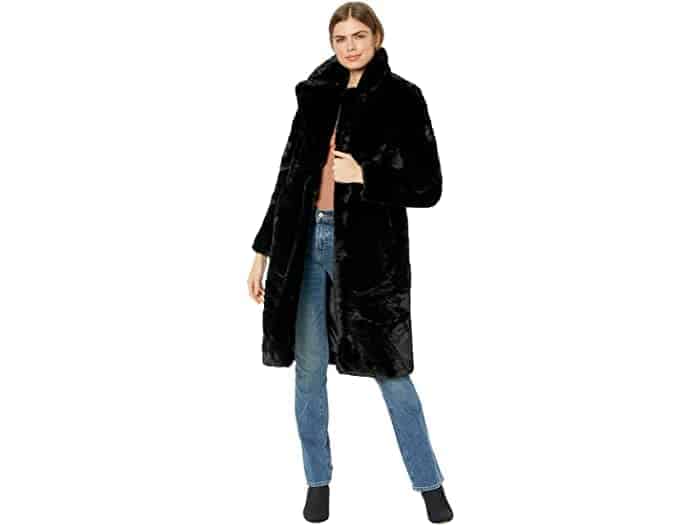
Every woman loves a rich, soft fur coat. But why is that so? If you don’t know it already, you should know that a fur coat has always been a sign of luxury and sheer elegance.
It is the kind of coat that makes everyone’s head turn. Add a posh clothing piece to your wardrobe by investing in a durable fur coat.
Historically speaking, fur coats were the first coats humans ever created. Humans and their close relatives wore clothing made from animal pelts 170,000 years ago. The fur coat has been greatly refined since then. And now, you can get all the look and luxury of fur in an animal-friendly design that contains no actual fur.
History
Fur was worn as a status symbol at least as early as the 1000s. Royals in Europe frequently wore fur coats and capes. In the 1300s, laws were introduced in Europe that regulated who could wear fur, as determined by social status.
Fur coats were trendy in Victorian Era society as well, with women and men both wearing fur coats. But it wasn’t until the 1950s that fur coats became the super glamorous fashion option that anyone could have. Fur coats became modern, with several different styles available for men and women.
It was in the 1970s that fur became controversial, according to Fashionista. Animal rights activists spoke out about fur, sparking an anti-fur movement that led to the use of faux fur more and more in fashion. Another benefit of fake fur is that it’s much cheaper, which makes it possible for everyone to have style that’s associated with class and glamor.
4. Maxi Coat
Typically, a maxi coat is a full or ankle-length coat. Coats that fall well below your knees are also considered to be maxi coats. This is a type of overcoat that is typically oversized, with full sleeves, wide lapels and an attached belt.
Like trench coats, maxi coats can be paired up with any kind of dress. However, these versatile coats look the best when flaunted with a white tee and skinny jeans. Elevate the look a notch higher by wearing your killer heels alongside it!
Style
You surely can’t do without a warm, snug overcoat during the freezing winters. But protecting you from the colder months is not the only appreciable thing about an overcoat.
This winter essential also makes a fashion statement with its long, classy style. The key to rock your outfit with any overcoat is by slipping on a cushiony woolen scarf around your neck as well as trendy ankle-length boots.
5. Peplum Jacket
Though it’s not often seen in today’s fashion, the peplum jacket was absolutely everywhere in women’s fashion at one point in time. This jacket is named for the ruffle around the bottom, the peplum, which was the height of style in the 1940s. The peplum jacket usually have wide, short lapels and a cinched waist that ends with a ruffle around the bottom. In any design, the peplum jacket always has a ruffle that gives it a distinct silhouette.
6. Swing Coat
The swing coat, or princess coat, is a signature look of the 1950s. This classic women’s coat was very close-fitting around the bodice, flaring out at the waist. This style accommodated for the common fashion of the day, as many women wore big, full skirts. The flaring bottom of the coat gave the style its “swing,” which inspired the name.
7. Wrap Coat
The wrap coat was probably the first type of jacket ever invented. The earliest outwear was pretty crude: basically, just pieces of fur roughly stitched together and wrapped around the body. The wrap coat has been highly refined and more well-defined since then, but it’s still safe to say that wrap coat styles have been around for tens of thousands of years. That makes the wrap coat one of the longest-running fashion trends in all of human history.
Style
Wrap coats look a bit like robes. They come with belts that keep the coats secure. Wrap coats may be made in hooded or collared styles but commonly have very wide lapels either way. Wrap coats are made in all different lengths, colors, and materials. Wrap coats are a versatile and stylish cold weather look that’s right on-trend right now. The wrap coat may also be called a cocoon coat.
8. Spencer Jacket
The spencer jacket first appeared in the late 1700s but soon, the style was adapted to become a staple of women’s fashion. The spencer was perfect for the fashion of the day because women’s gowns were high-waisted. Enter the cropped spencer jacket that ended just below the bosom.
Style
The cropped, long-sleeved spencer jacket re-emerged on the fashion scene in 2013 thanks to Ralph Lauren, according to Fashion History. Now, the spencer jacket has become a popular part of the fashion world again.
Types of Jackets for Men
Men’s outerwear has been an essential part of fashion for a long time. They have been used to cover up during the autumn and winter months and to strike a pose. They have been used as a symbol of rugged masculinity and a functional piece of attire for over a century.
There are different types of coats and jackets for various occasions and they are worn by men of different classes, professions, cultures, and ages. Thanks to globalization, many tastes and designs have transferred over from different countries and entire continents. Hence, there is now a jacket for almost any occasion. There are special jackets or coats that you can wear to dinner, a sporting event, a date, a formal event, or even to your job.
Men’s Coats Chart
1. Bomber Jacket
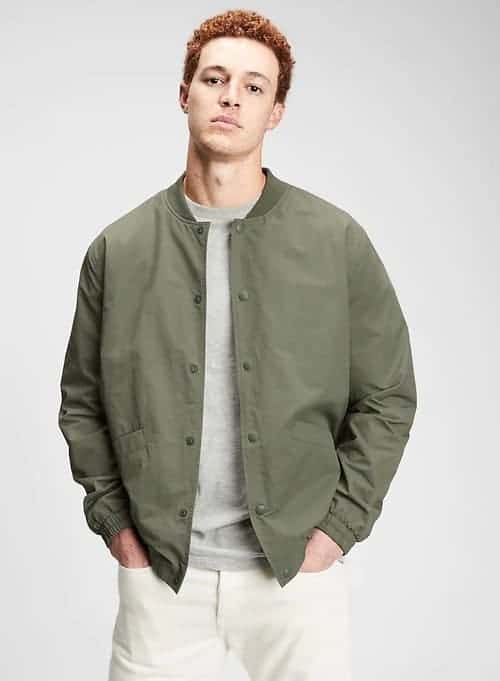
A fashion classic, the bomber jacket was created for pilots in the air force during WWI. It became part of popular culture and apparel over the decades.
Go for this sexy casual jacket and team it up with a white tee and ripped jeans, and then get ready to channel your inner daredevil.
Style
The flight jacket is a variation of the bomber jacket that is popular with celebrities and fashionistas of all kinds. Specifically, the MA-1 flight jacket is a hot high-fashion look that gained attention right away for its sleek, trimmed-down bomber jacket design.
History
The MA-1 flight jacket appeared in the U.S. Air Force uniform in 1950, a lightweight bomber jacket with polyester insulation. The design became popular with military personnel around the world and continued to be worn for decades. Soon, the style was adopted by rappers and soon, the flight jacket reached epic fashion status.
2. Car Coat
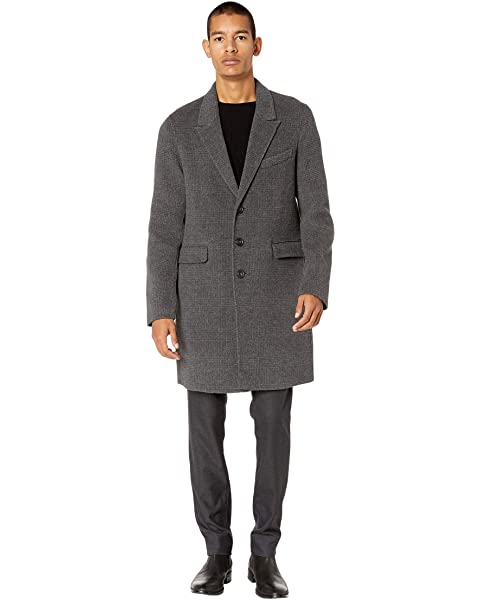
Originally designed to be worn by drivers in cars with open designs, car coats are simple but elegant. These coats have a straight collar, a buttoned or flat front placket, and diagonal front pockets. Car coats are hip-length and have a one-piece back with an A-line fit. Often, car coats are made with wool to create a warm, insulating fit.
3. Chesterfield
The Chesterfield is a style of overcoat that was, at one time, the height of men’s fashion.
History
The coat is said to have been worn first by Philip Stanhope, the 4th Earl of Chesterfield. According to fashion legend, and the Gentleman’s Gazette, he wore the style in the early 1800s. The Earl, along with some of his friends, was a member of a group that was the trendsetters of British fashion of the time.
Style
Because Chesterfield was so popular, all overcoat styles may also be called Chesterfield coats. However, the original style was a single-breasted, dark overcoat with a velvet collar. Notably, it did not have a waist seam.
4. Chore Coat
The chore coat is really the essential work jacket, made to withstand hard labor and harsh conditions. The chore coat is a loose-fitting coat with large breast and hip pockets. It also has a button closure that leads to a pointed collar. Usually, chore coats are made with a heavy fabric, usually twill or canvas.
History
The chore coat was first worn in the late 1800s in France, a popular piece of fashion with railroad workers, farmers, and laborers of all types. It was perfect for wearing over a pair of overalls.
Modern Style
Chore coats were widely manufactured and in the 1920s, Carhartt changed the game with the chore jacket made in blue denim. Soon, they introduced their brown duck canvas material that would soon become synonymous with Carhartt and with all workwear. The core coat hasn’t changed much since then, maintaining its iconic style and toughness. It’s still a popular choice in workwear fashion.
5. Cloak
Cloaks have a rich tradition of being worn by people that tend to convey mystery. They are worn by people mostly as a fashion statement or as part of a costume in today’s world, rather than a means to keep warm.
History
The earliest cloaks were more like ponchos, a large piece of fabric with a hole cut out for the head. Roman soldiers wore a variety of cloaks in different lengths, from shoulder-length to hip-length to knee-length to ankle-length.
The simplest cloak was known as a paenula. It was worn by both men and women. The cloaks worn by Roman soldiers were called sagum. These cloaks were knee-length and fastened with a metal or leather clasp.
Cloaks were still worn through the 1950s but finally faded from the fashion scene. Rarely, they are still worn for ceremonial occasions and costumes, according to History of Clothing.
6. Covert
The covert coat was meant to be a riding coat. That was why it was designed in the late 1800s. But the coat was so popular, it became a style must-have. By 1890, every well-dressed man was wearing a covert coat. The coat somewhat looked like a Chesterfield but much shorter. It also had side slits, according to Gentleman’s Gazette.
Style
The covert is a single-breasted men’s jacket with a fly front, lapels, and two flap pockets, along with a poacher’s pocket. It also has a collar. The covert coat is also made with covert cloth, a twill cloth made with tightly-spun yarn.
7. Crombie Coat
The Crombie coat is named for John Crombie. A son of Scottish weavers, John Crombie was a cloth producer who founded a woolen mill in 1805. Soon, his high-quality cloth became popular with London tailors. Sometime in the late 1800s, the Crombie coat was created.
Style
The Crombie coat has a three-quarter length with a velvet collar, usually in a contrasting color. This coat is perhaps best known for being a staple of ’60s rock and roll fashion, a favorite look of the Beatles during this time. The coat has become a timeless look worn by David Beckham and Cary Grant.
8. Dinner Jacket
The dinner jacket is worn at black-tie events. It is very similar in style to a traditional tuxedo jacket. The dinner jacket is almost always black, navy blue or white, and is distinguished by stain jacket lapels. It is customarily worn with a white dress shirt and a bow tie.
9. Donkey Jacket
The donkey jacket, also known as the sack coat, is a warm jacket with a strip across the shoulders that is usually waterproof. The jacket is typically dark blue in color. The jacket is hip-length. This style became popular with working men in Victorian and Edwardian times, around the late 1800s and early 1900s.
10. Duffle Coat
A duffle coat or duffle jacket is an iconic piece of fashion that everyone has seen, even if you might not have known its proper name. This is a warm hooded overcoat that is usually made of heavy woolen fabric. The duffle coat has toggle closures. Usually, duffle coats are made to be slightly loose-fitting to accommodate for heavy winter clothing underneath, according to Heddels.
Style
The modern duffle coat hasn’t changed much since the 1850s. This is when John Partridge first designed the coat. Partridge was a men’s clothier in Britain. The most famous wearer of the duffle coat may be Paddington Bear, a well-loved literary character who has also enjoyed movie fame.
11. Duster Jacket
Horsemen began wearing the duster jacket, or simply duster, to protect their clothes from the dust that blew up from the horses’ hooves while riding. The dusters used to slit up the back to the hip level so that they could be easy to wear.
No cowboy’s attire is truly complete without the duster. This iconic silhouette has defined Western movies for decades. The duster is instantly recognizable. It’s a lightweight, loose-fitting coat that is often long enough to touch the ground. Hence, the name duster…because the coat “dusts” the ground.
History
Dusters actually protected cowboys and others who rode horses from the dust of the trail. They became part of the official uniform for the Texas Rangers, which helped these jackets achieve their iconic fashion status.
12. Eisenhower Jacket
Before he was President, Eisenhower was one of the most formidable generals ever to serve in the U.S. military. A battle-tested leader, he did not like the WWII uniform was worn by the U.S. military. He had his own tailor take a Wool Field Jacket, Model 1944, and modify it to precise specifications. The modified jacket became the standard issue for the U.S. military later that same year. It became known, of course, as the Eisenhower jacket.
Style
The Eisenhower jacket was short and fitted at the waist. It had a button front for brass buttons and wide lapels, along with two flap breast pockets also secured with brass buttons. In Eisenhower’s own words, he wanted a military jacket that was “very natty looking,” according to the National Museum of American History. The jacket has become an iconic fashion staple associated with the era. The jacket has since achieved classic retro-style status.
13. Field Jacket
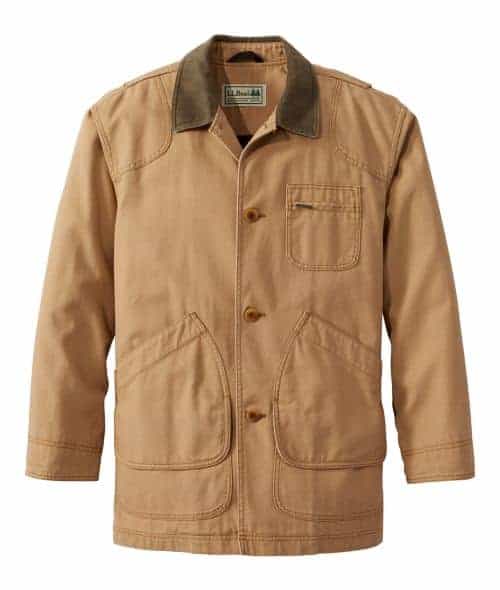
Though distinctly a military design, the field jacket has made the leap into high fashion. Just about every designer has offered up their own twist on this classic garment over the years, making the field jacket one of the most famous pieces of outerwear in all of fashion. However, this jacket started out with some pretty murky beginnings and it was incredibly unpopular with the soldiers who had to wear it. Because it’s so associated with soldiers, the field jacket may also be called a technical jacket.
History
When WWII started, the Army field jacket was impractical and uncomfortable, suitable only for garrison duty and not for combat situations. The Army countered with the M-1939 Service Coat. This was a long wool coat that was also impractical. With war on the horizon, wool shortages were likely…making the long wool coat a truly bad idea.
Military quartermasters created the M-1941, a lightweight jacket with a wool lining. Soldiers complained that it didn’t have pockets and was ill-fitting. Finally, the Army developed what M-43. This design had plenty of pockets and was easy to wear, something previous designs lacked.
The field jacket continued to adapt over time but the basic style remained essentially the same. The jacket truly hit its heyday in the 1960s, becoming as synonymous with the fashion of the era as bell bottoms.
14. Flak Jacket
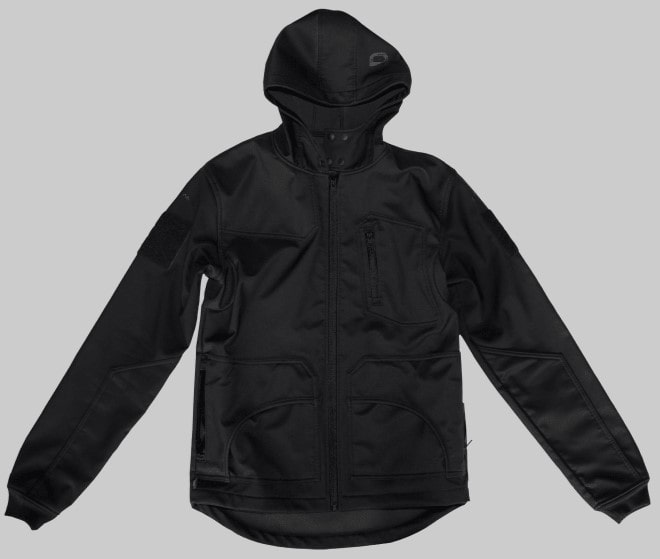
Though you’ve probably never thought about it this way, the flak jacket is really the modern version of knightly armor that was worn during the medieval period.
History
A more modern version of armor was tested on a small scale in WWI but the designs were too heavy. Lighter body armor styles were developed during WWII using overlapping layers of aluminum, steel, or fiberglass integrated into nylon fabric.
These early flak jackets protected the wearer’s front and back against shell fragments without compromising movement. These first jackets could not stop bullets, but they did offer some protection against shrapnel.
Newer, even more, protective flak jackets were developed in the 1960s using composite layers of steel. Because they’re made to stop bullets, flak jackets are also widely called bulletproof vests.
Flak jackets don’t have much of a distinct style of their own. Usually, these “jackets” are vests that cover the body front and back. They can be designed to be worn as innerwear, under the clothing, or outerwear that goes over the clothing. Flak jackets aren’t true jackets at all in many cases, but may sometimes be designed in more traditional jacket styles.
15. Fur Coat
While primarily seen as winter wear for women, the fur coat can be and is worn by men in a formal setting in the winter. Fur coats made with faux furs can be worn during very harsh winters, especially in places like Northern Europe and Asia. It is also customary among people living in mountainous areas to adopt this piece of clothing.
16. Guards Coat
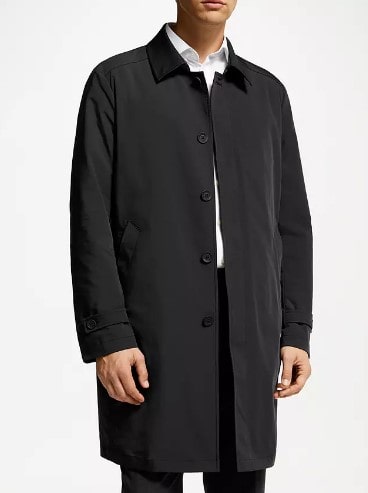
The guards coat is a type of overcoat that came to fame as the coat used by the English Officers of the Guards. This overcoat is distinct for its peaked lapels and the six-by-three button design. This coat has welted pockets and a belted back that allows it to be adjusted to the wearer.
17. Hacking Jacket
The hacking jacket has become one of the most singular looks of equestrian fashion, a recognizable staple of horsemanship. The word comes from hack, or hackney, which was used to describe a horse that was typically used for everyday casual riding.
History
Well-dressed gentlemen in the 1700s needed a jacket they could wear while casually riding, something to put on while riding around on the home property. The hacking jacket became a highly popular fashion choice and was soon used as everyday wear, not just in riding, according to Gentleman’s Gazette.
Style
The hacking jacket has a short lapel, a single breast pocket, a three-button front, and a slanted pocket on one hip. This jacket has a tapered, well-fitting design that makes it easy to wear while riding.
18. Harrington Jacket
The Harrington jacket is probably most famous for being worn by James Dean in “Rebel Without a Cause,” a film that is known for the iconic image of Dean leaning against a brick wall wearing the jacket and a pair of blue jeans with his white T-shirt. The jacket became the symbol of coolness and never totally left the fashion scene after it was made famous by Dean.
History
However, the history of the Harrington jacket goes back much further than James Dean. This jacket was known as the blouson before it was donned by Dean, also called a golf jacket or a windbreaker. JFK frequently wore one when he went sailing and later, George W. Bush was known to wear one, according to Primer Magazine.
The blouson, later the Harrington, was a loose, collared jacket with a casual style that was cinched around the waist. The Harrington dates to the G9 jacket of 1937, designed by Baracuta.
19. High-Visibility Vest
High vis vests, or high-visibility vests, are customary clothing for many working-class professions. These include yellow waistcoats, which are the most popular form used as a uniform for airport workers and construction workers, among others. It is meant to provide high visibility to the wearer because they’re often working in conditions that can put them at risk of accidents.
20. Loden
The loden coat or loden jacket may also be worn as a cape, which is how you will often see this overcoat. This is a long, warm coat that was invented in the Alps region. The word loden comes from “lodo,” an old German word that means “rough fabric.”
History
The loden coat was worn by shepherds, farmers, and hunters in the Alps, where conditions were harsh. This long coat was made with weather-resistant material that was easy to clean, usually linen, wool, or loden fabric.
Loden coats became popular throughout Austria over the years. In the 1900s, they had made their way into Europe. These coats are made in a special way with wool that has been woven and specially treated to make it dense and soft to the touch. As a result, the loden coat is very warm and resistant to the weather, protecting the body against the world.
21. Mackintosh
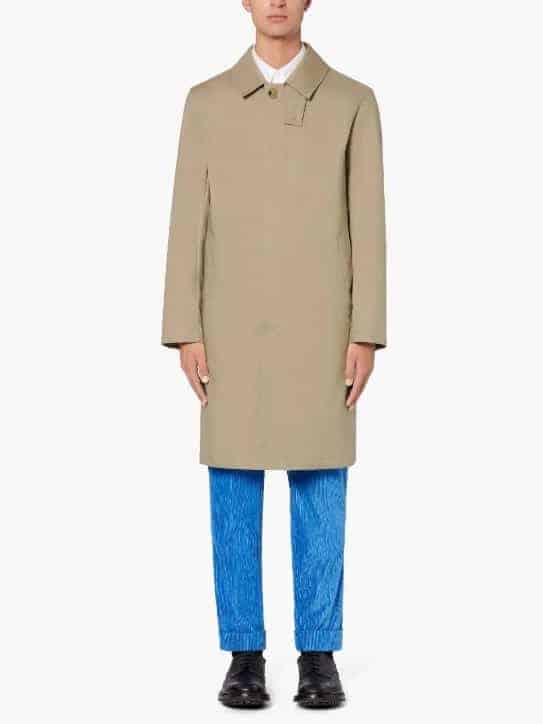
The Mackintosh was named for the Scottish chemist who invented the waterproof fabric that was used to create this coat. The Mackintosh is a waterproof raincoat that is so recognizable, it’s sometimes just called a raincoat or rain coat. The Mackintosh is made in a unique way that brings two pieces of fabric together with rubber to create a waterproof design. The special fabric was patented in 1823.
22. Military Jacket
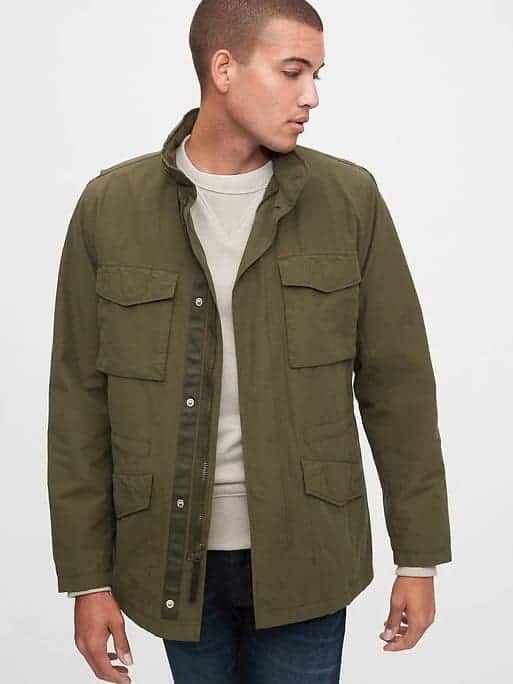
The classic military jacket has gone from the battlefield to rock and roll fashion that has been worn by everybody from the Beatles to Michael Jackson. It’s a look that instantly gets noticed for its double-breasted front with brass buttons, epaulets, and short, signature style. However, this jacket has a long history that definitely pre-dates the colorful military jackets worn by the Beatles.
History
The military jacket dates to the hussars of the 1700s, light horse troops. The jacket they wore was known as a pelisse or braided outer coat. Their version of the coat had fur cuffs and fur lining. It became the model for many subsequent military dress uniforms.
Style
Women began wearing military jackets as early as the 1800s and later, the jackets became a staple of rock stars and fashionistas everywhere. Band uniforms are often styled with military-style jackets.
23. Morning Coat
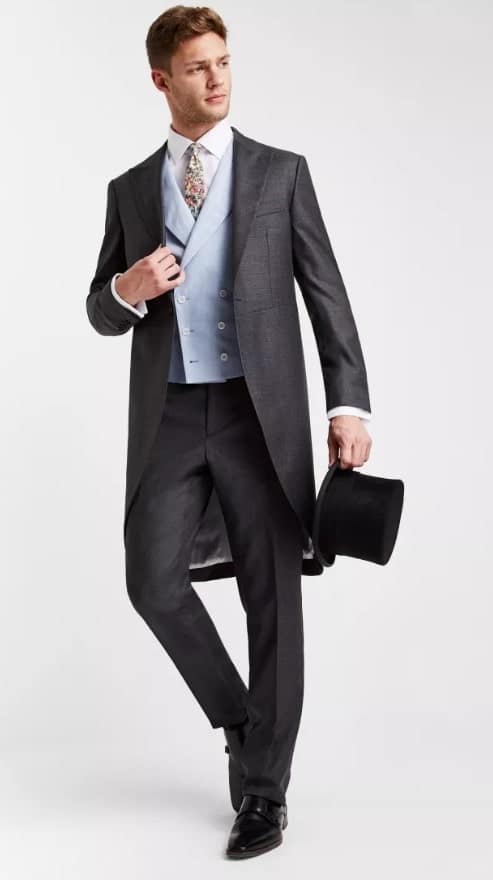
The morning coat, also known as the cutaway, is a variation of the frock coat that dates to the 1800s. The morning coat was modified to make it more suitable for riding a horse. Soon, the morning coat replaced the frock coat as the fashionable gentleman’s jacket of choice. It has since become a staple of royal fashion, according to the Rake.
Style
The morning coat is distinct for being long in the back with curving sides and wide lapels. It’s a more streamlined, modern look than the classic frock coat and has become a favorite look at weddings and other daytime formal events.
24. Motorcycle Jacket
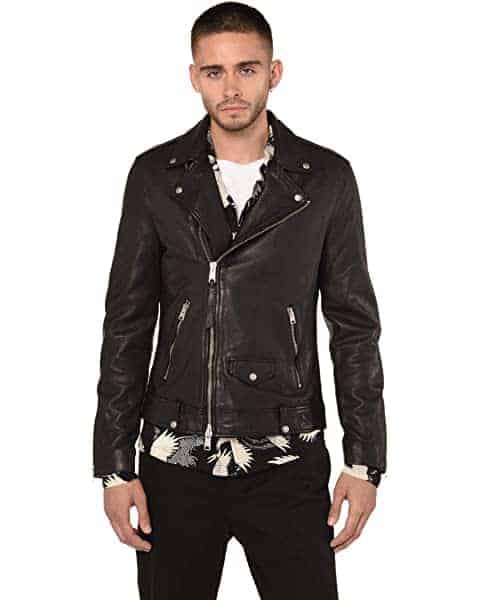
The motorcycle jacket, also known as the biker jacket, has reached legendary fashion status. The motorcycle jacket can be worn by anyone and it always looks cool, it’s always in style and it pairs perfectly with casual and even semi-formal looks.
History
The first biker jacket was designed in 1928 by Irving Schott, according to Glamour, and was sold at the Harley-Davidson store in New York for $5.50. Schott named the design the Perfecto.
Style
Though it was invented in the 1920s, the motorcycle jacket didn’t become famous until it was worn by James Dean in 1955. The jacket, paired with Dean’s denim jeans, became a staple of the young actor’s look. The jacket caught on with young people of the era and has been a huge part of fashion ever since. This is still the jacket that’s known for being cool and it will always be in style.
25. Nehru Jacket
The Nehru jacket originates in India. It was worn by the country’s first Prime Minister to serve India as an independent nation, Jawaharlal Nehru. He served in the position from 1947 to 1964. The Nehru jacket caught on in U.S. fashion, particularly in the 1960s counterculture.
Style
The Nehru jacket looks like a classic suit jacket but with no collar or lapels. Instead, the jacket has a front button closure. The jacket is finished with a high, round neckline and a stand-up jacket collar. The jacket is still seen in modern fashion all over the world.
26. Norfolk Jacket
The Norfolk jacket has been a favorite style choice for royals. The jacket originated in England and has a pretty noble history.
History
The exact origins of the Norfolk jacket are a little unclear. By one legend, it was a hunting jacket invented in the 1860s by the 15th Duke of Norfolk. By another legend, the jacket was actually created in the 1820s by the Earl of Leicester, who had an estate in Norfolk, England.
Style
No matter when and where it originated, the Norfolk jacket became a hot look in the 1930s. It was styled with two long box pleats in the front and one in the middle of the back. The Norfolk jacket is often worn with a belted waist. It’s thigh-length and has short lapels. It’s single-breasted with three to four front buttons.
The half Norfolk jacket is a shorter version of the Norfolk that is usually about hip-length.
27. Paletot
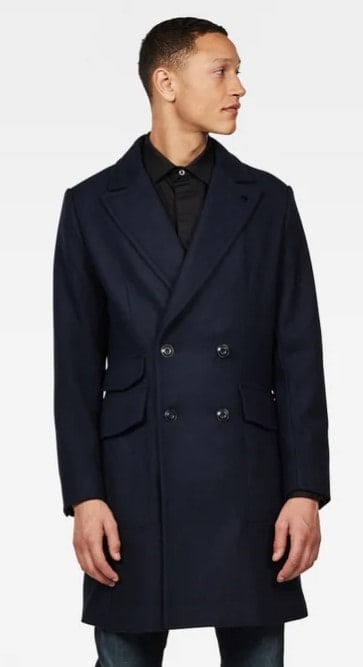
The paletot is a type of overcoat that was first seen centuries ago. Yet the look is so enduring, it’s still worn today.
History
The paletot is an overcoat with a pinched waist that has a bit of flare past the hips. The design appeared in the 1800s and became popular in Victorian Era fashion. The paletot is double-breasted with peaked lapels, according to Gentleman’s Gazette.
28. Peacoat
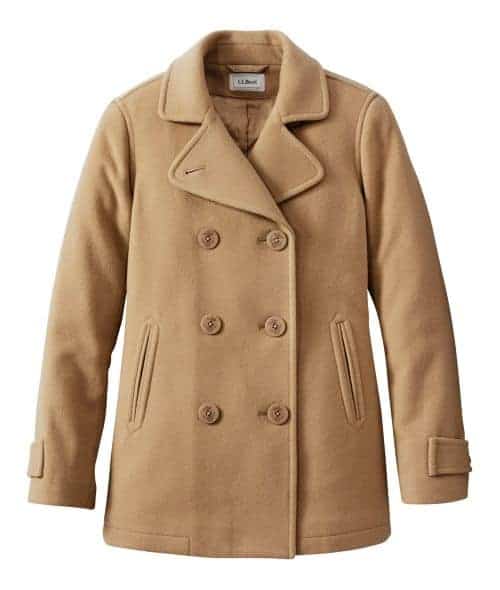
The classic peacoat or pea coat has been seen everywhere. It appears in period movies, on city streets, and on fashion runways. It’s a classic look that’s somehow always trendy, too. It may surprise you to learn that this popular coat has roots in naval history.
History
The first pea coat was worn by members of the Dutch navy in the 1800s. The word peacoat comes from the Dutch “pije.” The Dutch were the first to wear it, but it was the British navy that really spread the popularity of this coat. Once the British navy began wearing it, the peacoat was adopted by the U.S. Navy, too, according to Heddels.
The peacoat was durable and it could withstand the cold and the rain, which made it perfect for sailors and all those who worked onboard ships. The peacoat was mostly form-fitting with a slight flare at the hips that made it easy to climb ropes, a necessary function for anyone on the seas.
Style
Peacoats are double-breasted and have a collar that can be buttoned all the way up. Peacoats typically have vertical slit pockets. Often, the brass or plastic buttons on the peacoat have little anchors on them, a nod to this design’s naval past. Peacoats are made of wool, which makes them very warm.
29. Slicker
Most people think of bright yellow, loose-fitting jackets with hoods as raincoats. These are actually a modern version of the slicker, also known as an oilskin or a rain jacket, which was a specially-treated cape made for fishermen and others who worked around or on the water.
History
These early raincoats were made at a linen mill on the coast of Scotland. The mill made sails for ships but saw the value in the specially-treated fabric, which was covered with oil to give it a waterproof coating. They used the fabric to create clothing, including capes that were waterproof and warm. Because of the way the oil aged, the capes turned yellow in time.
These waterproof capes are said to be the inspiration for the Mackintosh, the first raincoat that was designed in the 1820s.
Style
Today, yellow is synonymous with raincoats. Any waterproof raincoat can now be called a slicker. As long as rain and water continue to be a thing, rainproof outerwear will be in style.
30. Sports Coat
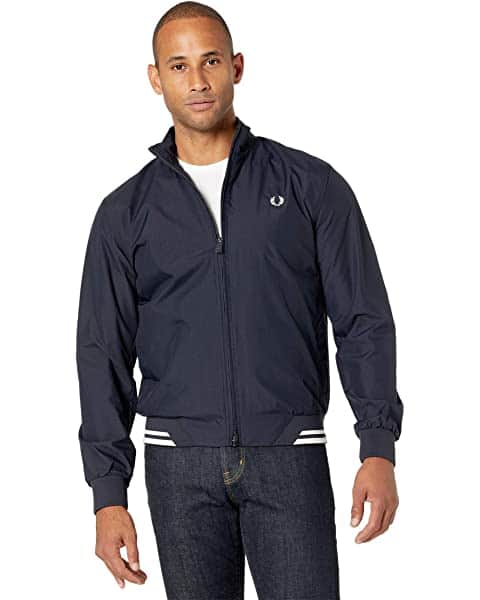
The sports coat, sport coat, or sports jacket is single-breasted and worn by both men and women, though originally it was designed for men. It resembles a suit jacket but has a little less shape to create a looser, more casual fit. This jacket was designed in the 1800s for sporting events out in the country. The sports jacket is a later, more updated, and modern version of the Norfolk jacket, according to Fashion History.
31. Smoking Jacket
The ultimate symbol of wealth and sophistication, the smoking jacket has been worn by elegant men for a long time. This jacket is associated with suave gents in the late 1900s but actually, this jacket style is centuries old.
History
The smoking jacket was a popular fashion accessory in the late 1600s when tobacco was being exported around the world for the first time. The best way to enjoy this new, exotic treat was with a smoking jacket.
By the 1850s, the smoking jacket was a staple of men’s fashion. The smoking jacket then looked like a short robe that was typically made with high-quality wool, flannel, cashmere, or velvet. The heavy material helps to absorb the smell of the smoke and protects the wearer from falling ashes, according to the Gentelman’s Journal.
Style
In the 1900s, smoking jackets became associated with sophisticated style. This is an enduring garment that’s still associated with high fashion and classic elegance.
32. Suit Jacket
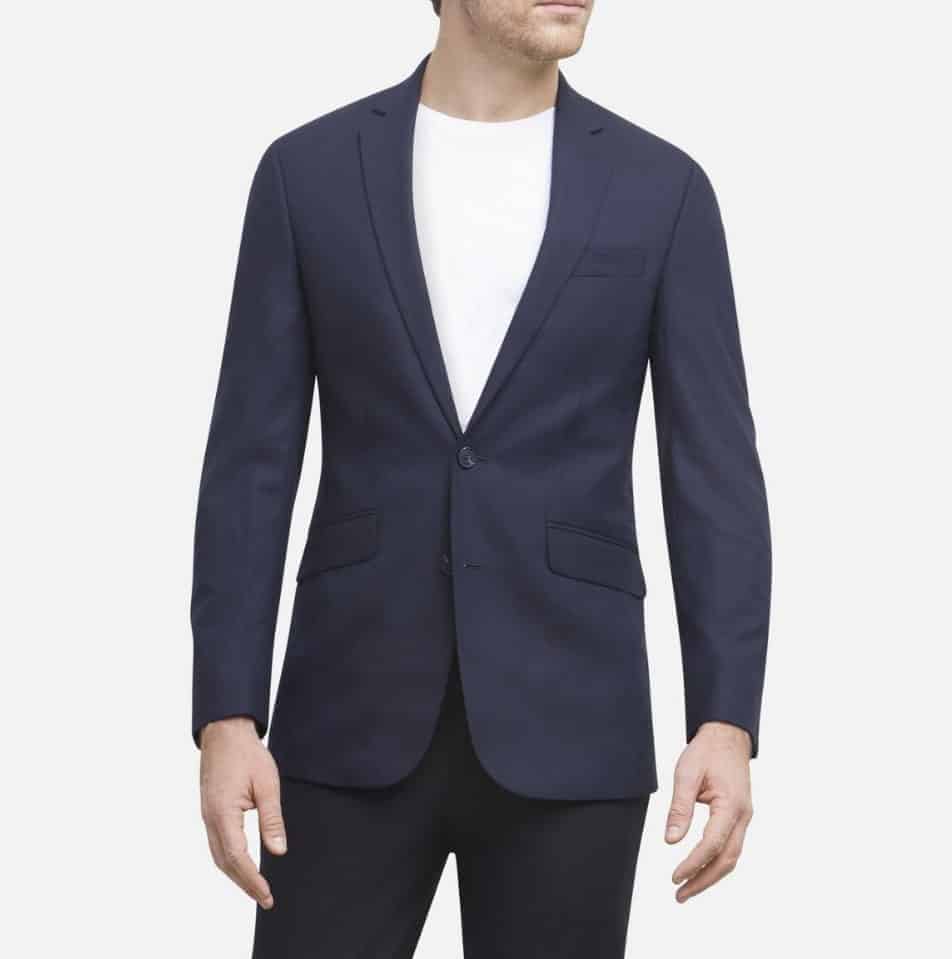
The traditional suit jacket has evolved and changed over the years, but it has basically been the same for about a century. Men can thank trend setter Beau Brummell for the suit that is seen everywhere today. Brummell was the first one to wear a more casual style of simple jackets and trousers. In the 1800s, the era of powdered wigs and velvet everything, that made him totally unique.
The suit jacket got its more modern look around 1900 when suits were worn in dark, woven fabrics. The jackets had four-button fronts and slim lapels, according to GQ.
33. Tailcoat
The tailcoat jacket, or simply tailcoat, shares its origin with clothing that was designed for horsemen to avoid dust collecting on their clothes. It has evolved into formal wear for the modern man. Two types of tailcoats can be typically purchased. The first is the dress coat which can be worn during evening affairs and can be worn with a formal tie. The second is the morning tailcoat, which can be worn as a formal morning dress with the front tapered off.
Style
The tailcoat is distinct from the two long tails at the back of the jacket. This jacket has such a big place in men’s fashion, it has lots of other names. The tailcoat is sometimes simply called tails, but may also be known as the swallowtail jacket or claw hammer jacket.
History
The tailcoat first appeared in fashion in the late 1700s. They were a big part of formal evening dress wear for men for decades.
Tailcoats were actually as useful as they were stylish. These coats made it possible to ride a horse without a man’s jacket getting in the way. Tailcoats are still worn today for the most formal of occasions and they are still worn by royals, according to WiseGeek.
34. Trench Coat
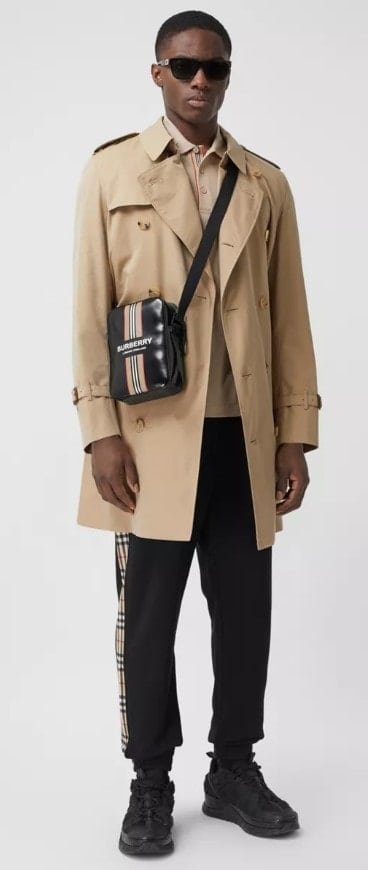
Trench coats came onto the fashion scene during WWI. However, the design is actually far older than that. Trench coats were really born in 1823 when the first rubberized cotton materials were being produced to create weatherproof outerwear.
It was in WWI when trench coats really hit their stride and the “trench” was added to the trench coat, which was known as Mackintosh raincoats before the early 1910s. Trench coats have since become a standard style.
Style
Burberry was the first to make the modern trench coat style that’s so familiar today, becoming the major outfitter of the British Army following the Boer War. Now, the classic trench coat has been re-designed by some of the biggest names in the fashion industry.
The trench coat is usually double-breasted with 10 front buttons with wide lapels. It has become, through pop culture, a staple of film noir and detective fiction. It has been worn by many icons of Hollywood, such as Humphrey Bogart and Gregory Peck.
35. Trucker Jacket
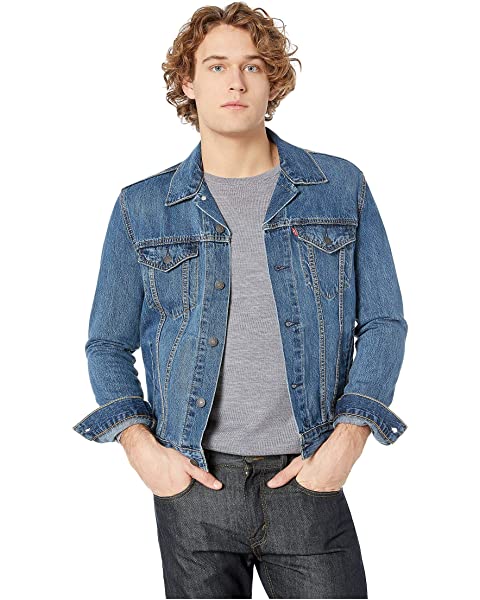
You probably call it a denim jacket because the trucker jacket is so associated with this material. The classic trucker jacket has two breast pockets and two hand pockets. But what’s most distinctive about this denim jacket is the “V” stitching that runs from the breast pocket to the seam.
History
The trucker jacket exploded into fashion history in 1967 with the Type III Trucker Jacket from Levi’s. The Type III really caught fire in the fashion world, but the Levi’s trucker jacket had already appeared way earlier. Levi’s released the Type II trucker jacket in 1953. But it was really the Type I trucker jacket that started it all. This was released by Levi’s in 1905, according to Primer Magazine.
The trucker jacket has become a fashion staple and even the most stylish stars and celebs have been seen wearing it. Trucker jackets are still hot on the fashion scene and show no sign of cooling down anytime soon.
36. Tuxedo
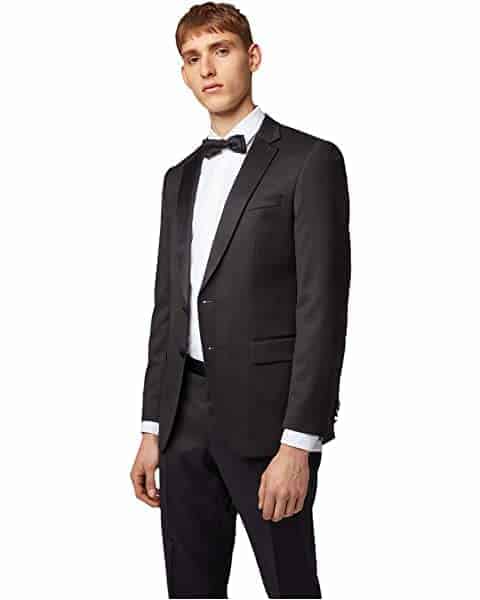
The tuxedo jacket is a variation of the suit jacket that’s more formal in design. Tuxedo jackets typically have satin lapels and a more fitted look than traditional suit jackets. This is the American equivalent to dinner jackets in Britain. The tuxedo jacket is worn strictly during formal events and is often accompanied by a white dress shirt and a bowtie.
37. Ulster
The ulster is also known as the ulster overcoat. It’s named for the Irish region where it originates. The ulster is a tweed overcoat that has many of its own very distinct characteristics.
Style
The ulster is a long coat that is made for warmth. The ulster coat is double-breasted, with a wide, notched lapel on each side and patch pockets. Ulster overcoats also typically have contrast stitching that you can see around the cuffs, another distinct element of the ulster style. You will also see cuffs on an ulster overcoat. Because the ulster is loose-fitting, a half-belt is also included. This is a belt in the back of the coat that allows for adjusting.
38. Varsity Jacket

The varsity jacket, also known as the letterman jacket, is one of the best-known types of jackets. You can’t watch a single TV show or movie that has high school kids in it without seeing a varsity jacket. This style feels like it’s been around forever. But what’s the real story of the letterman jacket?
History
Varsity jackets have a truly iconic look. These are woolen jackets that have leather arms, creating a contrasting style. The letter is prominently displayed on the upper chest. Varsity jackets are made in school colors to proudly show their affiliation.
The varsity jacket has its roots with the Harvard basketball team of 1865. The team wanted a way to reward the best players on the team. They decided to put a large letter H on woolen sweaters. The coaches of the team called the players who were awarded these sweaters “lettermen,” according to History Daily.
In 1875, Harvard’s football team adopted the practice and began rewarding their own lettermen. It was in the early 1900s that the sweaters became jackets, which was done simply because the jackets were more durable.
Style
Letterman jackets are still a staple of high school and college life today. Without the letter, varsity jackets are called baseball jackets. This style shows no signs of leaving the fashion scene anytime soon.
39. Windbreaker
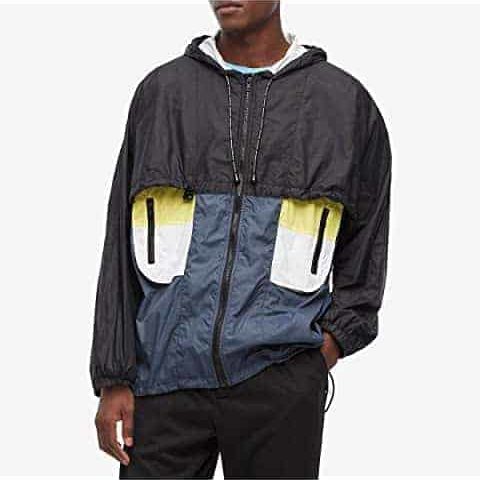
The windbreaker, known as the windcheater in the UK, is similar to the parka, according to Love to Know.
History
Modern windbreakers are typically made with nylon, though its ancestor the parka has been around for about 500 years. In the 1970s, windbreakers and parkas became very popular as outerwear. Windbreakers have never really gone out of style since.
Style
Windbreakers usually have features like stormproof taping and waterproof fabric. They are often loose-fitting, with ribbed cuffs and a ribbed hem that rests at waist or hip level. Windbreakers may have a hood or a collar.
40. Warmus Jacket
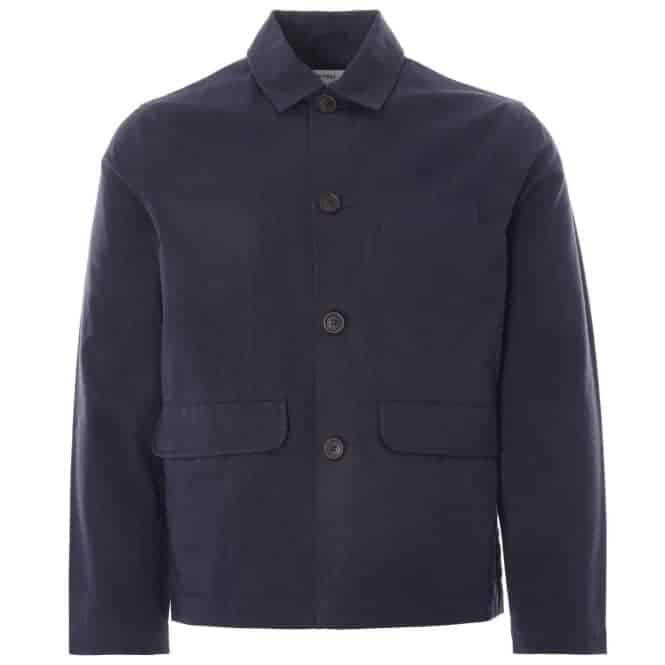
The wamus jacket looks a lot like a standard button-up collared shirt, but it’s actually made to be a piece of outerwear. The wamus jacket usually has two hip pockets. The wamus was invented in the southwestern U.S., according to WordNik.
41. Zip-Up Hoodies
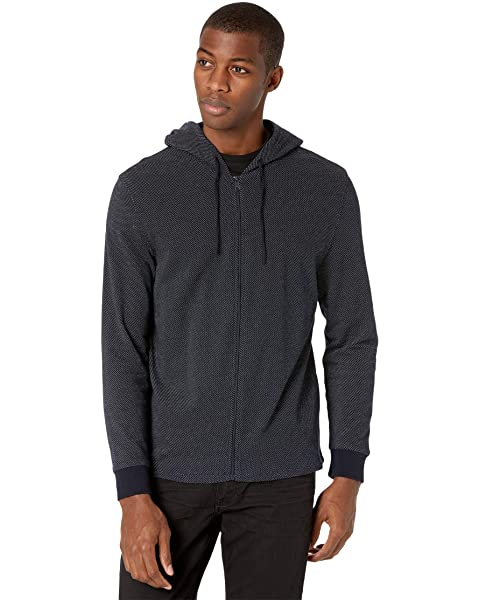
The zip-up hoodie, or zip-up hooded sweatshirt, has been a popular jacket for decades. The zip-up hoodie is associated with coolness and casual style. This hooded jacket may also be called a sweat jacket.
History
According to Rolling Stone Magazine, Champion takes credit for making the first hooded sweatshirt. Champion began widely-producing sweatshirts in the 1930s. With the zipper added, hooded sweatshirts became a classic jacket style that’s still hot today.
42. Coatee
A coatee is a close-fitting coat that is embellished with a short skirt or tails. The coatee was a popular style for military wear. It was worn by the U.S. Army during the U.S.-Mexican War. Napoleon wore a coatee style as part of his military uniform in the late 1700s.
43. Mess Jacket
The mess jacket is a type of military jacket that’s part of the mess dress uniform that is worn by officers. Mess jackets are waist-length and have lapels in most styles. Often, these jackets feature epaulets in classic military style.
Specialty Jackets
Some jackets are not meant for protection from the elements or even for style. Some jackets have been used to denote specific professions or accomplish specific tasks. These specialty jackets are really only worn in very particular circumstances but they are just as recognizable as all those jackets that have graced the fashion runways over the years.

The chef’s jacket is a truly standout look. It’s a long white coat, usually about thigh-length, with a double row of buttons down the front and sleeves that are slightly shorter than the wrists. These shortened sleeves keep the hands and wrists free to work. The coat dates to at least 1822 when it was pictured in an illustration from that year. By 1878, chef’s coats were being widely manufactured, according to the Culinary Institute of America.
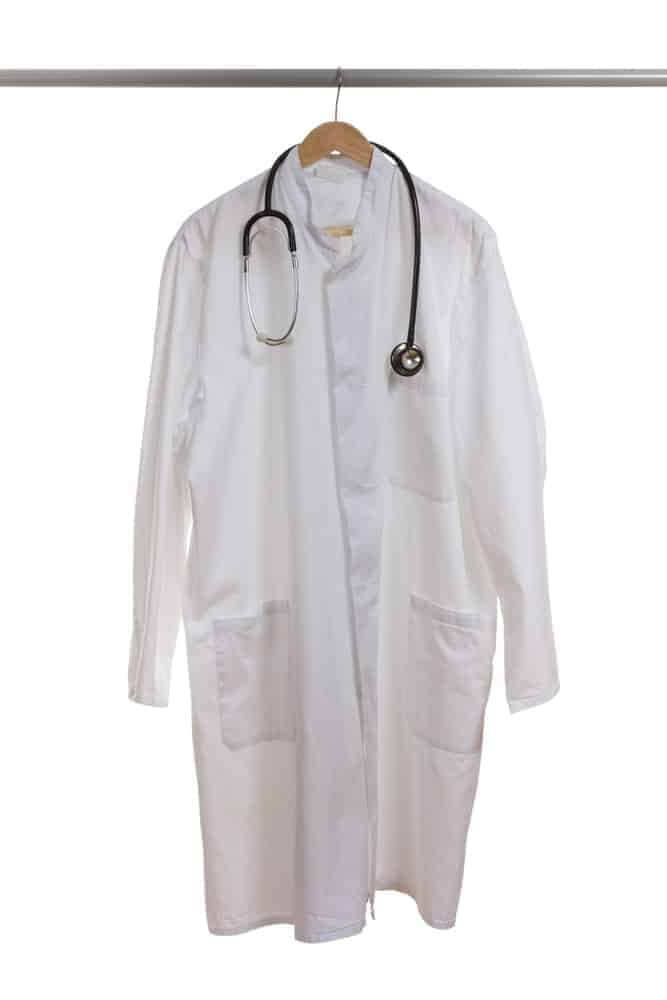
According to the Association of American Medical Colleges, the white doctor’s coat dates to the late 1800s. Doctors used this long, hip-length white coat to separate themselves from the snake-oil healers and other pseudo-healers who made a tidy living scamming people during those times. Now, the white doctor’s coat is a symbol of the medical profession that is worn by lab workers, scientists, and physicians of all kinds.
Probably the darkest jacket in all of history, the straightjacket dates to at least 1795. This is when the word was first commonly used. However, it may be derived from straight-waistcoat, a phrase that dates to 1753. Straightjackets were used to restrain prisoners and mental health patients who were believed to be potentially dangerous or violent to themselves or others.
Straightjackets were used for many, many years as a mental health device. In more modern times, they have come to be regarded as cruel and inhumane devices. Straightjackets wrap around the body and secure in the back, rather than the front. They have extra-long sleeves that are also secured behind the back.
Metal straps, buckles, and hasps are present on the jacket to secure it so that it cannot be opened unassisted. When buckled up, the jacket fits very close to restrict the movements of the person inside of it. Straightjackets are so difficult to remove, magicians have actually used them in their acts to perform escapes for dazzled audiences. Among others, Houdini was known to escape from straight jackets during his performances.
Historic Jackets

The Atilla jacket, also known as the Hungarian Atilla, was popular in the 1500s. The jacket is characterized by metal buttons, usually brass, that decorate the jacket vertically in multiple rows. This was a stylized, hip-length jacket with a military look that was actually very popular with nobles.
The doublet is still one of the most recognizable jackets in all of fashion history. This was a close-fitting jacket, usually highly stylized, that was popular from the 1400s to the 1600s. The doublet was worn over a shirt. It usually had a standing neckband and was very close-fitting in order to show off the male form.
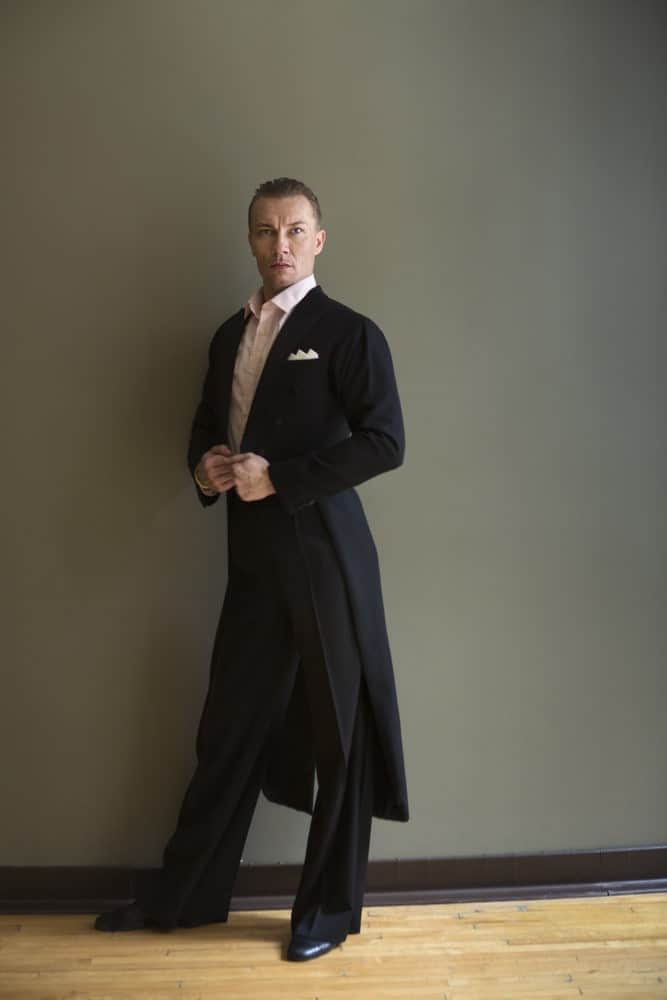
The frock coat was popular throughout the Victorian Era and beyond. It’s an overcoat that falls to about knee-length that is slightly flared past the waist The frock coat is a very distinct silhouette that is often seen in movies and plays set in the Victorian Era. The traditional frock coat is typically double-breasted with wide lapels.
The justaucorps was a popular look in men’s fashion for a very long time, though most men don’t wear this style today. The justaucorps was a knee-length coat that became extremely popular with the royalty and nobility of Europe in the late 1600s. This coat was typically made from very fine fabric and heavily embellished. These coats had many buttons down the front. The justaucorps was most noticeable for the wide, stiff skirt of the coat, which created a distinct silhouette when paired with the cinched waist and fitted torso and sleeves of the design.
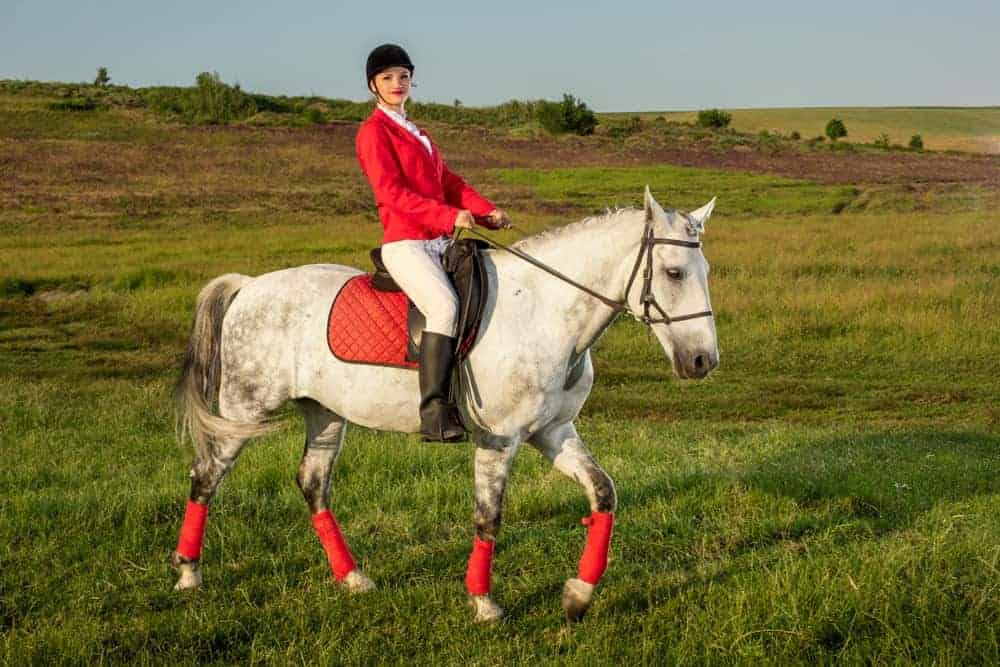
The Redingote was worn by women in the late 1700s and early 1800s. This was a full-skirted, double-breasted jacket with a short, cinched waist. The redingote was a popular riding jacket, according to the Encyclopedia Britannica.
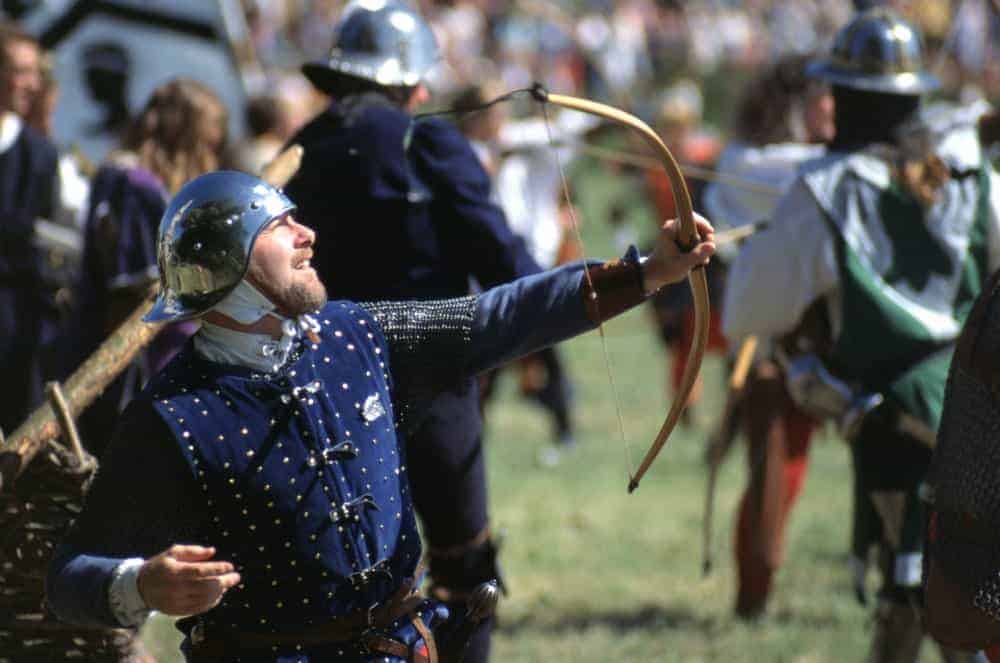
The tabard, or surcoat, originated during the Crusades in the 1000s. The chainmail worn by knights would get dangerously hot under the Middle Eastern sun.

They covered this with tabards, lightweight jackets that were essentially rectangular pieces of fabric with a hole for the head. The sides were open, so tabards were often belted. Soon, tabards became an everyday fashion for everyone, not just knights. Tabards were frequently decorated with coats of arms and other symbols and were worn throughout the Middle Ages.
Jacket Materials
Jackets and coats are made from a huge variety of materials. Sometimes, what the jacket is made from is what defines the jacket itself.
Cashmere
Cashmere is a type of wool that is considered to be a luxury material. Cashmere is insulating and soft, which makes it perfect as jacket material. Cashmere also has a luxury look. However, this material does require dry cleaning and special care.
Cotton
Natural cotton has been used to make clothing for centuries. It’s soft, it’s non-irritating on the skin, it’s washable and it can be dyed to any color or pattern you can imagine. Cotton is used to make denim and canvas, both materials that are frequently used for jackets.
Fleece
Fleece has a deep pile that gives the fabric a lot of softness. Fleece is very insulting, which makes it a great material for jackets because it will keep you warm. Fleece is also machine-washable, always a great feature in any clothing item. A fleece jacket is always soft and warm, something that’s very nice to have in cold, wet weather.
Leather
Leather is, of course, a very popular material for jackets. Many different types of jackets are made from leather because this material looks good and wears well. For those who don’t want to purchase real leather, there’s a huge variety of faux leather jacket styles available. There are many leather jacket and leather coat styles that are available in synthetic designs that use no animal-derived products whatsoever.
Shearling
Shearling, also known as sheepskin, has been used to make clothing since the Stone Age. It became a popular material for jackets during the Victorian Era when it was used to make warm winter coats. In the 1940s, the now-iconic bomber jackets were made with shearling lining, according to GQ. Shearling is still used to make jacket lining, which adds not just warmth but also a distinct, fleecy look. Shearling jacket styles are very popular for winter wear because they’re so warm. Many jackets lined with the material are marketed simply as shearling jackets.
Synthetic Fabrics
Polyester, polyurethane, nylon, and other synthetic materials are very frequently used in jackets. These materials can be used to make all parts of a jacket, from the shell to the insulation to the lining. These materials are popular because they’re easy to clean, durable, lightweight, and can be made to create jackets of any style, color, size, and shape.
Wool
Wool is a common jacket material that has been used to make outerwear for centuries. This is a naturally heavy, soft material that is very durable and resistant to moisture and weather. Wool and wool blends are used to make lots of different coats and jackets in many, many different styles.
Related: Top Coat and Jacket Stores for Men and Women
FAQs
Even once you know about the different types of jackets, you may still have lingering questions. Which type of jackets should you be buying? How much should you be spending on jackets? Get the answers to the most common questions and get all the info you need to know about your outerwear.
Jacket vs. coat – what’s the difference?
The fundamental difference between jackets and coats, both of which come under the broad category of jackets, is that jackets end at the waist. On the other hand, coats are a longer garment that usually goes up to your knees or thighs. While jackets and coats are different, they’re both outerwear.
Which jacket is best for winter?
Some jackets are clearly just made for style. Others are made to keep you dry. Some may be made to show prestige. When there are so many jackets made for so many reasons, it’s hard to know which one you should wear to stay warm in winter.
According to Travel + Leisure, parkas and puffer coats will help you stay warm and dry in ugly winter weather. Any jacket that provides you with good coverage and warmth will work well in winter. Look for a winter coat that has insulation when you’re looking for warmth.
How should a jacket fit?
Jackets are an outer layer, something you put on top of the outfit you’ve already put together. So how important is the fit of the jacket you’re wearing? Very. Like everything you wear, you want your jacket to fit well and flatter your shape. If your jacket is ill-fitting, you’ll be uncomfortable, you won’t look as good as you could and you won’t be getting the full benefits of the jacket.
When a jacket fits well, it is flattering to your body. The jacket that fits well will follow the lines of your body. It should fit close to your body without pulling, bunching, and straining anywhere. The shoulders of the jacket should end at your shoulders, rather than protruding beyond them, and the sleeves should end somewhere just before or just beyond the wrists.
Can leather jackets get wet?
If you’ve ever seen the “Seinfeld” episode about Jerry’s expensive leather jacket that gets ruined, you may live in fear of getting caught in the rain. But can leather jackets get wet or is “Seinfeld” right that they should stay dry?
The answer is yes and no. Most outerwear is designed to withstand some moisture and most leather jackets can withstand a little bit of rain or snow. But if the leather is exposed to water over a long time or exposed to a lot of water at once, damage can result. According to Leather Cult, moisture can cause mold and mildew. Some leather, like suede, can also be prone to water spots and staining.
Real leather can’t be fully waterproof because it’s so porous in nature. Leather exposed to water can become stiff and may actually rot. That’s definitely not a good look. Leather can be treated with a leather conditioner to help waterproof it, but this will need to be applied regularly.
If your leather gets wet, wipe it down to dry it as soon as you get back inside. Allow it to dry at room temperature to prevent rot. Have you heard the expression “rode hard and put away wet?” It’s really bad to put leather away when it’s wet. Make sure your jacket is exposed to air everywhere so it can dry naturally after it’s been exposed to moisture.
With the right care and maintenance, leather jackets can be worn in the rain and snow…just not a lot. When in doubt, get an umbrella or flip your jacket inside-out.
Can jackets be tailored?
Everyone’s body changes over time. You may gain weight or lose weight and you may even lose height over time. You could gain or lose muscle mass and your shape change as a result. But does that mean you have to get all new clothing? Can a jacket be tailored to help you get a better fit?
Tailors can make alterations to make a jacket fit better in some ways but there are some things a tailor simply cannot do, according to Business Insider. A tailor can lengthen or raise the hem of a garment slightly, shorten sleeves and add buttons or snaps if needed.
A tailor cannot alter a jacket so that it is more than one size smaller because the proportions will end up being off. A tailor also can’t remove heavy shoulder pads or add much length to a jacket. Some rips or tears in jackets may be unrepairable as well because the fixed area ends up bunching up and not hanging properly. A tailor also can’t significantly change the style of a jacket.
Can jackets be washed in the washing machine?
Many types of jackets can be machine-washed. Some jackets definitely shouldn’t be put in the washing machine, like leather jackets, but there are many styles that can safely be washed. The only way to know how to care for your jacket is to check the label. If the jacket is not marked as “dry clean only,” then it’s probably safe to wash. Use the delicate setting and wash your jacket in cold water. Whether or not the jacket can be put in the dryer should also be left up to the label on the jacket.
Can jackets shrink?
Have you ever gone to put on a familiar piece of clothing and found that it suddenly feels a lot smaller than it used to? Did your jacket shrink…or did you get bigger?
Many types of fabric can shrink, including cotton, wool, and polyester. If exposed to hot water and hot air in the washer and dryer, just about any clothing item can shrink. This includes jackets. If you wash clothing in cold water and use low heat, shrinkage shouldn’t be a problem.
Which jackets are in style?
Fashion trends come and go in all types of clothing, including jackets. Right now in the world of outerwear, oversized blazers are a hot look, according to StyleCaster. Puffer coats and trench coats are all over the fashion runways, too.
It never hurts to have a few classics on hand when it comes to jackets. Varsity jackets are always a fun, sporty look. Leather jackets are always trendy, too. You can’t go wrong with a great-fitting leather jacket, which looks great for almost any occasion.
Which jackets or coats should be worn with dresses?
It’s not always easy to match a jacket with a dress. There are several ways to create stylish looks with jackets and dresses. If you’re wearing a more casual dress, try draping a leather jacket over your shoulders. This creates a cute, edgy look.
A long trench coat is a perfect solution when you have on a dress. The trench coat will give you plenty of leg coverage to help you stay warm and in the right circumstances, you can do a big reveal of your glamorous dress. Trench coats pair well with cocktail dresses, daytime dresses and professional looks. Wrap coats are another great option that works well with all sorts of dresses.
For formal dresses and black tie looks, you want to pair your dress with a fabulous faux fur coat. This will up your glam level and strike the right style note for any formal event.
How many jackets should you own?
There are ma-ny different types of jackets…maybe too many. Most people can’t possibly own all the different types of jackets. Focus on creating a wardrobe that includes some basic types of jackets and you’ll be ready for any style situation that may arise.
Everyone should have at least one bomber jacket, a leather jacket, a beautiful trench coat, and a raincoat. With these basic items, you’ll be prepared for different weather and you’ll have a nice selection of jackets to pair with a variety of different outfits. It’s also a good idea to have a classic trucker jacket, better known as a denim jacket.
Additionally, women should have at least one faux fur coat. This adds a lot of glamor to any outfit and it’s super warm for those extra cold winter days.
Men should also have a track jacket for athletic looks, a Harrington for casual-but-well-dressed situations, a parka for bad weather conditions, and a peacoat for a classic style that’s still well-prepared for cold and rain. It’s also a good idea to have at least one overcoat, like a Crombie, for professional and more formal looks.
Can men wear women’s jackets?
Women have been wearing men’s jackets for a long time…so why can’t it go the other way around? The biggest problem with women’s clothing is sizing. Men who can find women’s sizes that flatter their shape are lucky enough to have a wide range of clothing to choose from. Trench coats have been worn by both men and women for a long time and there are plenty of women’s styles that will suit a man’s frame, according to Real Men Real Style.
How do you tell the difference between men’s and women’s jackets?
It isn’t always easy to tell the difference between men’s and women’s clothing. If something fits well and looks good on you, it doesn’t really matter if an item of clothing is made for a man or a woman. However, if you want to know there are some ways you can try to tell the difference, according to eHow.
There’s one simple trick that will usually tell you whether you’re looking at a jacket made for a man or a woman: which side the buttons or zippers are on. Men’s jackets usually button or zip up on the left side of the body. Women’s clothing items are secured on the right side.
You can also examine the cut of the jacket. Men’s clothing is often wider in the shoulders, while women’s clothing is more tapered at the waist.
Which side is the zipper on in men’s jackets and why are zippers different for women?
Clothing became more refined and highly stylized during the Middle Ages. This is when clothing with small buttons became common for women of the wealthier classes. Women of high social standing did not dress in those days; they were dressed by their maids. Buttons were put on the right side of the body to make it easier for the maids to dress their ladies. Meanwhile, men’s buttons were put on the left side because men dressed.
Those days are long gone now but the tradition has stayed the same. To this day, zippers and buttons on jackets and all sorts of clothing items are on opposite sides for the genders.
Is a cardigan a jacket?
Cardigans button up in the front. They’re worn over other clothing. So…is a cardigan a type of jacket? The short answer is no.
Cardigans are actually a type of sweater that is designed to be worn over other clothing. You can still wear a jacket over a cardigan. They’re used to add another layer of warmth but cardigans are still inside worn, while jackets are made to be worn outside.
Can you wear a jean jacket over the age of 50? How can you pull it off?
The classic jean jacket, or denim jacket, or trucker jacket, isn’t limited to age. No style is ever truly off-limits, though you do want to think about showing a little less skin with your clothing as you add more birthday candles to your cake. The trick to wearing denim as you mature is to stick to darker denim. Lighter denim tends to look young and it looks more casual. Darker denim is a bit more sophisticated, just like you.
How much should you spend on a coat?
A coat is an essential clothing item if you live in a cold climate or if you’re visiting a cold climate. But how much money should you spend on getting a coat? There is a very simple answer to the question: spend what you can afford. If you have a lot of disposable income every month, you can afford to get a coat for a few hundred dollars. If you want a luxurious coat or something high-fashion, you can save up for a few months and get an even more expensive coat.
But if you’re working with a limited budget, you can still have a stylish coat and say within that budget if you get creative. Look for coats at thrift stores. You can find designer coats and other big-ticket items at thrift stores for very reduced prices. Go online to look for designer imposter coat styles that look like high-end coats but cost much less than the big labels. You can also use online shopping to search for great bargains and sales on coats.
How do you choose the right coat for your body?
Even if you’re only wearing your coat when you’re outside, you want to wear something that flatters your body and looks good on you. There are certain styles that look better on some bodies than others.
If you have a more athletic body with fewer curves, a wrap coat is a great choice for you. This helps add a little bulk around your bustline and your hips while still emphasizing your waist.
Do you have less hip than bust? If you’re a bit bigger up top and more lean on the bottom, a peacoat is a great look for you. This will add a little extra fabric around your lower waist, which can help balance out your shape.
If you’re more shapely below the waist with a smaller bustline, short jackets will suit you well. Cropped jackets and waist-length jackets of all kinds will help add a little more bulk up top and create a balanced shape.
An hourglass shape with a lot of curves is well-showcased in a belted trenchcoat. The V-shaped neckline and cinched waist will flatter those curves well.
References:
Britannica – Poncho
Burlington – Types of Coast and Jacket Materials
Etymonline – poncho (n.)
Gentleman’s Gazette – Military Formal Attire – Mess Dress
Gentleman’s Gazette – The Norfolk Jacket Guide – History, Style & How to Buy
The History Bunker – Sack Coat or Donkey Coat
LovetoKnow – Nehru Jacket
Vintage Dancer – 1950s Coats and Jackets History




















